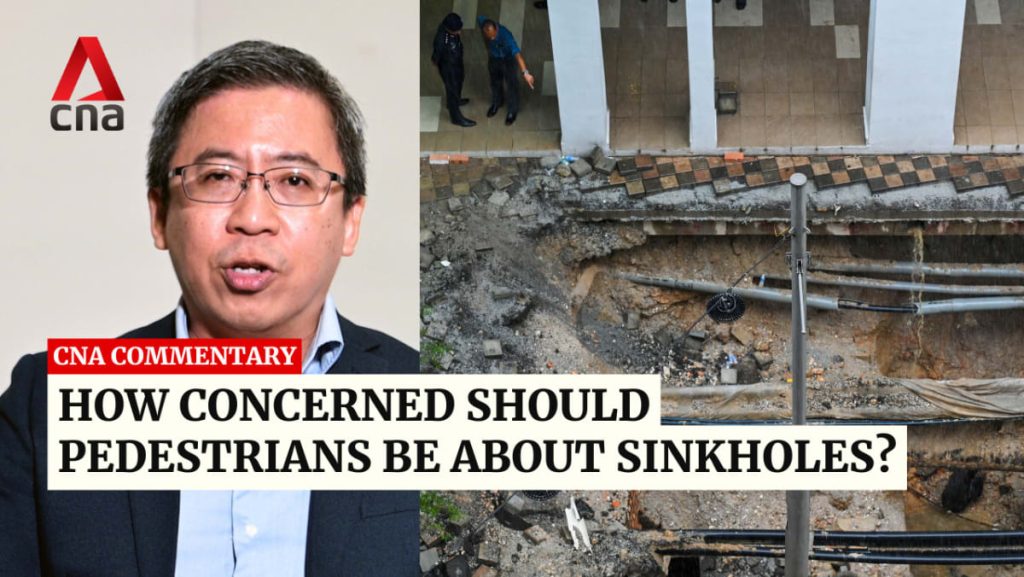Sinkholes are becoming a growing concern in urban areas, as evidenced by recent events in Kuala Lumpur where a woman fell into one on August 23. The incident, followed by another sinkhole opening nearby a few days later, has raised questions about the risks associated with sinkholes. David Ng, a representative from the Institution of Engineers, Singapore, sheds light on the issue and discusses the level of concern the public should have regarding sinkholes.
According to Ng, sinkholes are a common occurrence in areas with underlying limestone or karst formations, which are susceptible to erosion due to the presence of water. These underground cavities can cause the ground above them to collapse suddenly, leading to sinkholes. While sinkholes can be triggered by natural factors such as heavy rainfall or changes in groundwater levels, human activities like construction and mining can also contribute to their formation. As urbanization continues to spread, the risk of sinkholes occurring in densely populated areas increases.
Ng emphasizes the importance of conducting thorough geological surveys before embarking on development projects in areas prone to sinkholes. By identifying potential risk factors early on, engineers and urban planners can take preventative measures to mitigate the risk of sinkholes forming. However, Ng acknowledges that it is not always possible to predict when or where a sinkhole may occur, as they can sometimes appear suddenly and without warning. This unpredictability underscores the need for ongoing monitoring and maintenance of infrastructure in sinkhole-prone areas.
While sinkholes can pose a threat to public safety and infrastructure, Ng cautions against alarmism and emphasizes that the risk of falling into a sinkhole is relatively low compared to other hazards. He advises the public to stay informed about potential sinkhole risks in their area and to prioritize safety measures such as shoring up unstable ground or avoiding construction in high-risk zones. By staying vigilant and taking proactive steps to address potential sinkhole risks, individuals and communities can reduce the likelihood of being caught off guard by sinkhole incidents.
In response to the recent sinkhole incidents in Kuala Lumpur, Ng stresses the importance of government agencies, engineers, and developers working together to address sinkhole risks in urban areas. By collaborating on land use planning, construction standards, and infrastructure maintenance, stakeholders can help minimize the impact of sinkholes on public safety and property. Ng also suggests that educating the public about sinkhole risks and prevention measures can help raise awareness and foster a culture of safety in communities.
As sinkholes continue to pose a potential threat in urban areas, Ng urges policymakers to prioritize infrastructure resilience and disaster preparedness to mitigate the impact of sinkhole incidents. By investing in early detection systems, emergency response protocols, and community engagement initiatives, cities can enhance their resilience to sinkhole risks and protect both residents and critical infrastructure. Ultimately, addressing the challenges posed by sinkholes requires a multifaceted approach that involves collaboration between government agencies, experts, and the public to ensure the safety and well-being of communities in sinkhole-prone areas.


